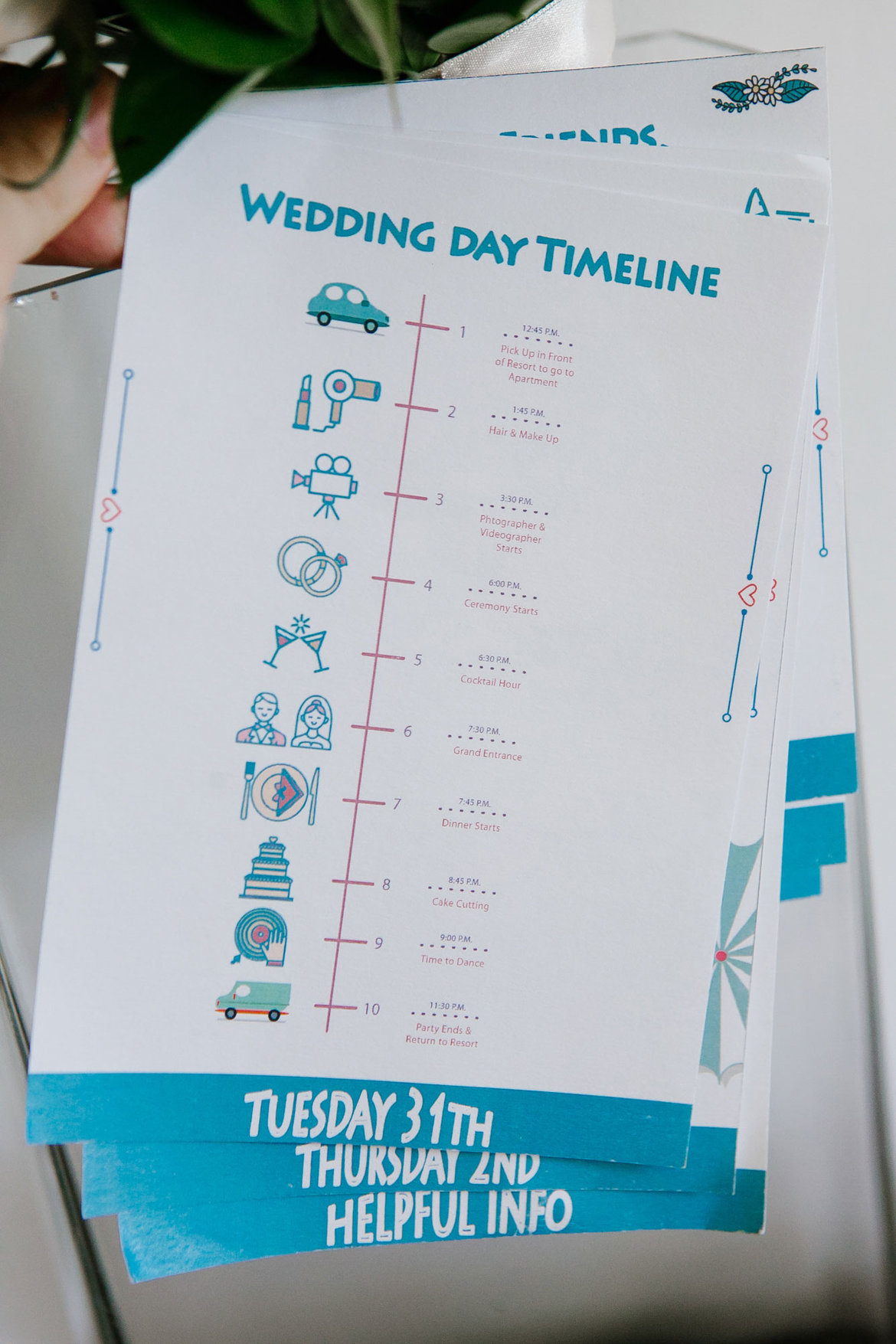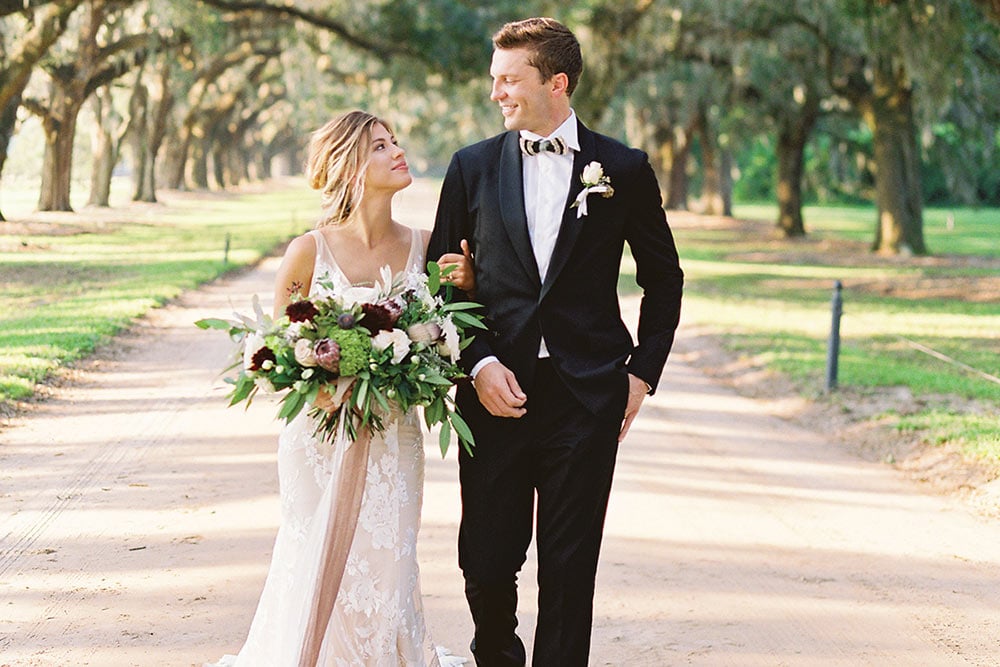Bridal experts share their best tips for putting together a day-of wedding schedule, as well as common mistakes to avoid.
By: Stefania SainatoWhether you're hosting a formal sit-down for 200 guests or a laid-back beach celebration for 20, timing can make or break your big day. "Your wedding will be a blur of emotions, and simply 'winging it' increases the likelihood that you'll miss something that's important to you," says Li Zhou from LadyMarry, an online and mobile app that guides couples through the wedding-planning process.
Elements that might not seem to be connected at first glance do, in fact, need to be coordinated. For example, a florist might need to know when the bakery is delivering the cake if they plan to add fresh flowers to it. The tent company needs to know when they can install the tent so that the flooring company can come in and install the floors. "Nothing is worse than vendors stumbling over each other, trying to set up," says Kim Sayatovic from Belladeux Events.
Creating and distributing a wedding timeline a few weeks before the wedding ensures that everything flows smoothly. It outlines your expectations for the day; all of your hired pros will be on the same page about their respective arrivals, departures, and contributions in between. The more information that they have, the less of a chance there is for errors to occur. Distributing a printed itinerary also minimizes the flurry of questions from the bridal party, family members, and friends as well.
Ready to get started? Here are some helpful planning dos and don'ts to keep in mind.

Photo Credit: Naiara Altuna from Genya + Erik Shenko Photography
Dos:
1. Do include every activity that is taking place during the wedding celebration — it's better to be more detailed than not comprehensive enough. "Couples usually note major events, like the first dance and toasts, but they tend to forget to add in time for getting dressed, exchanging gifts, making introductions, or transportation. They also need to remember to include things like setup and breakdown times for vendors," says Jamie Chang from Passport to Joy. Don't forget to list the point of contact for all wedding vendors, as well as his or her cell number.
2. Do review all vendor agreements to become knowledgeable about their hours of service. "For example, if you book a photography package for seven hours, then you'll want to ensure that all major events happen within that block of time," says Susan Dunne from Weddings by Susan Dunne.
3. Do schedule some extra time for the things that matter most to you. "For some couples, this means extra time alone with their photographer or taking some time for a much-needed Bocce match in between the ceremony and reception. For others, it's getting the dance party started early or ending it as late as possible. Once you identify where your priorities lie, the rest of the day will fall into place," says Gina Jokilehto-Schigel from Shi Shi Events.
4. Do start earlier than you think you need to on the day of your wedding. "You don't want to end up behind schedule for the rest of the day, so build in that cushion early," says Rebecca of Pink Bowtie Events. Tell everyone involved in your wedding that they must arrive at XYZ location 15 minutes before you actually need them. If they are early, fantastic — if they are late, you don’t even notice. Win-win!
5. Do add "buffers" of time whenever you'll be moving to a new location. Larger vehicles tend to move slower or have to take a different route due to road rules and restrictions. With taller buses in cities, you'll want to check which bridges and/or tunnels they're allowed to go through. The buffer rule applies to cocktail hour as well: Moving 200 people from there to dinner takes more than just a few minutes.
6. Do schedule ample time for formal portraits. "The biggest mistake that brides make is underestimating how long it takes to photograph and gather friends and family for portraits," says Britt Chudleigh of Britt Chudleigh Weddings. Assign someone to help you wrangle everyone up for snapshots. If you prefer not to see your fiancé before the ceremony, then stagger your portraits with each side of the family separately, leaving only the photos with you as newlyweds and a couple of combined group photos for the cocktail hour. Thinking about what you want from your photos will also help you form a reasonable timeline. For example, do you envision Vanity Fair-style group portraits, or are you just fine with a casual lineup? Do you want to make sure every gorgeous spot of your venue is documented, or would you rather build in time to stop and take photos somewhere else?
7. Do give yourself 10 to 15 minutes to step away with your groom and revel in your newly-married happiness without any interruptions. "It may be the only alone time you get all day!" says Renee Dalo of Moxie Bright Events.







